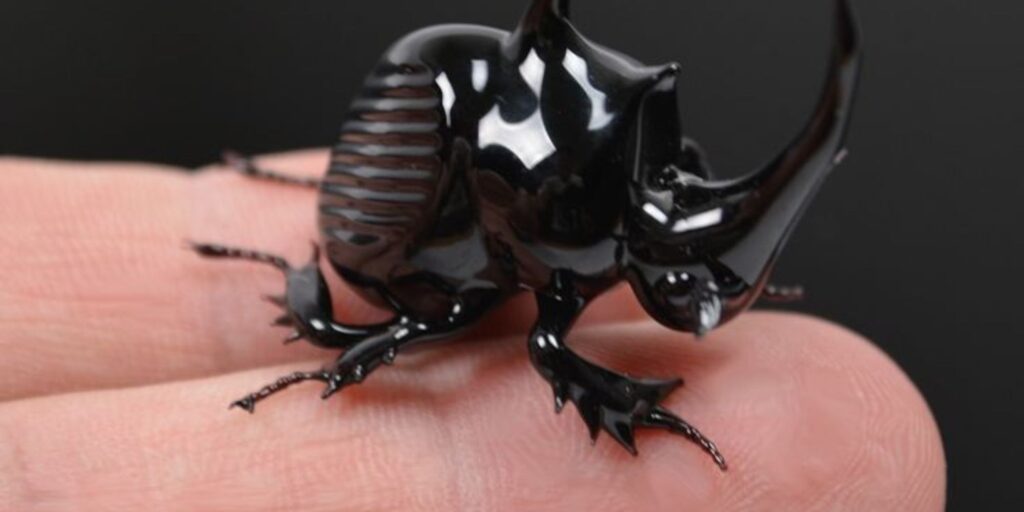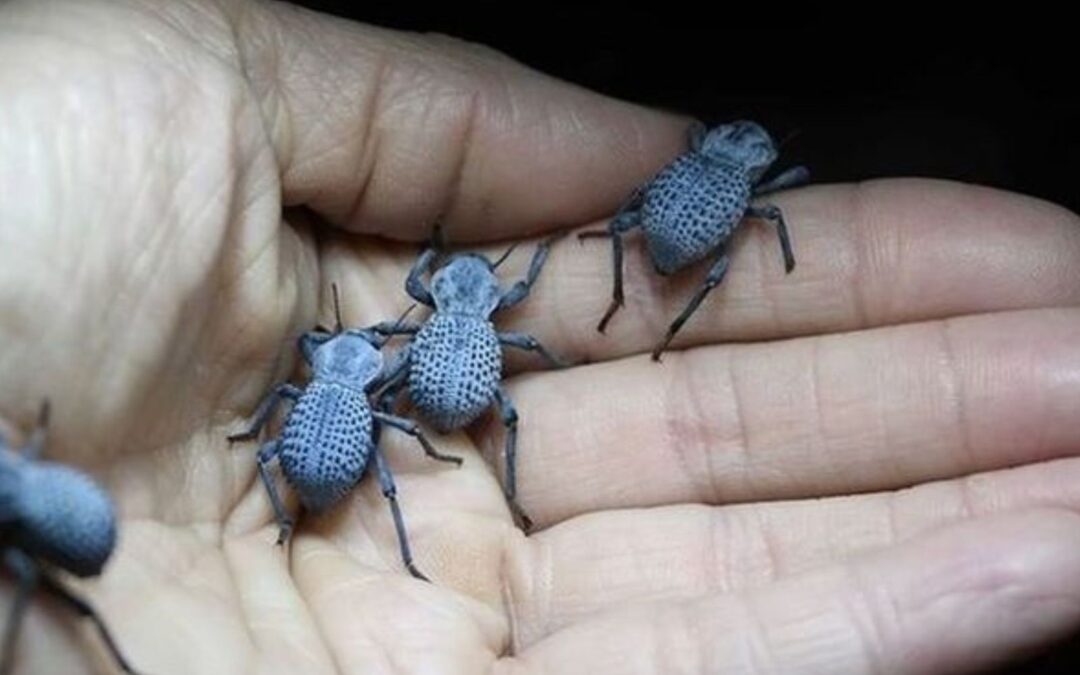Small beetles are fascinating creatures, often overlooked due to their size but rich in diversity and importance. These tiny insects, ranging from a few millimeters to a couple of centimeters in length, can be found in almost every habitat on Earth. Moreover, despite their small stature, they play crucial roles in ecosystems, such as pollinating plants, decomposing organic matter, and even controlling pests. Additionally, their hard, protective exoskeletons come in various colors and patterns, making them an intriguing sight for those who take the time to observe. In fact, some small beetles are known for their remarkable adaptability and ability to survive in extreme environments. In contrast, others have evolved unique behaviors, like burrowing or camouflaging, to evade predators.
Tiny Titans: Exploring the Fascinating World of Small Beetles
Beetles may be small, but they wield a remarkable influence on our ecosystems. With over 350,000 species worldwide, these tiny titans come in all shapes and colors, each with unique traits. From the vibrant greens of tiger beetles to the striking patterns of ladybirds, there’s a whole world waiting to be explored beneath our feet. They play vital roles as pollinators and recyclers in nature’s grand design. Join us on this captivating journey into the fascinating realm of small beetles! Whether you’re an enthusiast or just curious about these mini marvels, you will discover something new today.
Identify beetles

Beetles are a diverse group of insects, boasting more than 350,000 species worldwide. Their unique characteristics make them easily identifiable. Look for variations in size, color, and shape to distinguish one type from another.
Some beetles have distinct markings or features that set them apart. For example, the hard shell of many beetles can vary in texture and sheen. Observing their behavior also helps; some are fast runners, while others prefer to stay hidden. Each small detail adds to the fascinating world of these tiny creatures.
Bloody-nosed beetle
The bloody-nosed beetle, with its distinctive red head and black body, is an intriguing sight in gardens. This small beetle can usually be spotted during warmer months and is often found on the ground or in low vegetation.
When threatened, the bloody-nosed beetle releases a bright red fluid from its mouth that resembles blood. This clever defense mechanism deters predators and gives the beetle a fighting chance to escape danger unscathed. Its unique appearance and behavior make the bloody-nosed beetle a remarkable example of nature’s creativity.
Green tiger beetle
The green tiger beetle is a striking little creature known for its vibrant emerald hue and swift movements. These agile hunters are often found darting across sandy soils or along the edges of forests.
Their fierce appearance matches their predatory nature as they feast on various insects. With long legs designed for speed, these beetles can outrun many of their prey. Spotting one in the wild is a delightful experience that showcases the beauty and diversity of small beetles in nature.
Devil’s coach horse
The Devil’s Coach horse is a striking beetle known for its elongated body and fierce appearance. These nocturnal predators are often found lurking under decaying wood or leaf litter, where they hunt for insects.
With their glossy black exoskeleton and distinctive posture, resembling a scorpion ready to strike, they can be quite intimidating. Despite their menacing look, they play an essential role in controlling pest populations in gardens and forests. Their presence indicates a healthy ecosystem thriving beneath the surface.
Harlequin ladybird
The Harlequin ladybird is a striking little beetle with vibrant colors that can range from yellow to red. Its unique spots make it easily recognizable among the plethora of small beetles. This adaptable creature has spread across the globe and has become quite common in gardens.
Not just pretty, these ladybirds are voracious predators of aphids and other pests. Their presence can be incredibly beneficial for gardeners seeking natural pest control methods. Watch for them as they work tirelessly to maintain a healthy garden ecosystem!
Stag beetle
The stag beetle is one of the most recognizable small beetles, thanks to its impressive mandibles. The males often sport large, antler-like jaws that they use in combat for mating rights. These striking features can make them look fierce, but they’re generally harmless.
Stag beetles thrive in woodlands and gardens where decaying wood provides essential habitat. Their larvae develop within rotting logs, playing a crucial role in nutrient recycling. Observing these fascinating creatures can be an enchanting experience for nature enthusiasts and casual gardeners alike.
Lesser stag beetle
The lesser stag beetle, a small but striking creature, is often overlooked in the world of insects. With its distinctive antler-like mandibles and dark brown body, it can be found in woodlands and gardens across Europe.
These tiny titans are vital for their ecosystems. They thrive on decaying wood and help break down organic matter, enriching the soil. While they might not boast the size or fame of their larger cousins, lesser stag beetles play an essential role in maintaining ecological balance.
The brilliance of beetles
Beetles are remarkable creatures that showcase nature’s ingenuity. With over 350,000 species worldwide, their diversity is astounding. From the iridescent colors of jewel beetles to the intricate patterns on ladybirds, they captivate our attention in countless ways.
Not only do they exhibit stunning appearances, but many also play essential ecological roles. Beetles contribute to pollination and decomposition, helping maintain a balanced ecosystem. Their adaptability allows them to thrive in various environments, making them true survivors of the insect world.
Gardeners urged to help beetles.
Beetles play a vital role in maintaining healthy gardens. They help control pests and aid in pollination, making them essential allies for gardeners. Unfortunately, many beetle populations are declining due to habitat loss and pesticide use.
Gardeners can make a difference by creating welcoming environments for these small creatures. Simple actions like planting diverse flora, leaving some areas wild, and reducing chemical treatments can significantly boost beetle numbers. Embracing nature’s tiny titans enriches both your garden and the ecosystem at large.
How to build a bug mansion
Creating a bug mansion is an exciting project for any nature lover. Start by selecting a cozy spot in your garden, away from direct sunlight and heavy rain. Use untreated wood or natural materials to build small compartments for various insects.
Fill each section with different materials, such as twigs, leaves, and straw, to attract diverse species. Ensure there are plenty of openings for easy access. Decorate the exterior with stones or plants to blend them into the landscape while providing shelter for your tiny guests.
Are the insects in the home drugstore beetles?
If you’ve spotted small, brownish insects in your pantry or on food items, there’s a chance they could be drugstore beetles. These pests are typically about 2-3 mm long and have a distinctive oval shape.
Drugstore beetles often invade homes looking for dried goods such as grains, spices, and even pet food. If you’re finding them among your stored foods, it’s important to identify them correctly for effective control measures.
Where to Find Drugstore Beetles
Drugstore beetles are often found in homes, especially in areas where food is stored. Look for them in pantries, cabinets, and even behind appliances. They love grains, dried fruits, and other pantry staples.
These small beetles might also be lurking in opened packages of pet food or spices. They can easily hitch a ride on groceries from the store. Please keep your eyes peeled; you might spot them scurrying around unnoticed until they become a nuisance.
Controlling Drugstore Beetles
Controlling drugstore beetles requires a multi-faceted approach. Start by identifying their hiding spots, typically in dried foods or pantry items. Remove any infested products immediately to prevent further spread.
Next, keep your storage areas clean and organized. Vacuum regularly to eliminate larvae and eggs. Sealing cracks and gaps helps deter these pests from entering your home. Additionally, consider using traps designed specifically for small beetles to monitor their presence effectively without resorting to harsh chemicals.
New Year visits by tiny beetles: Carpet beetles and their kin, Dermestidae
As the New Year rolls in, tiny visitors like carpet beetles often make their presence known. These small beetles belong to the family Dermestidae and are notorious for sneaking into homes. They thrive on natural fibers, making your cozy sweaters and carpets prime targets.
Carpet beetle larvae can cause significant damage before you even notice them. Their fuzzy bodies blend seamlessly with fabrics, allowing them to go undetected for weeks. Stay vigilant this season; a little prevention goes a long way against these uninvited guests.
How To Prevent and Get Rid of Biscuit Beetles
To prevent biscuit beetles, store dry goods in airtight containers. Regularly check pantry shelves for any signs of infestations. Keeping your kitchen clean is essential; crumbs and spills can attract these pests.
If you find biscuit beetles, vacuum the area thoroughly to remove larvae and adults. Dispose of infested items immediately. Using insect traps can also help monitor their presence. Consider using diatomaceous Earth around baseboards to deter them naturally without harsh chemicals.
What are biscuit beetles?
Biscuit beetles, scientifically known as Stegobium panicum, are small pests often found in kitchens and pantries. They thrive on stored food products like biscuits, cereals, and flour. Their brown, oval bodies measure 3 to 4 mm long.
These tiny beetles are notorious for their destructive feeding habits. Female biscuit beetles lay eggs near food sources, and the larvae can cause significant damage before becoming adults. Keeping an eye out for these pests is essential for maintaining a healthy pantry environment.
What is the life cycle of a biscuit beetle?
The life cycle of a biscuit beetle begins with the female laying eggs in dry food products. These tiny, oval-shaped eggs hatch into larvae after about a week.
Once hatched, the larvae feed on starchy materials for several weeks, growing and developing. After reaching maturity, they pupate in secluded spots before emerging as adult beetles, ready to continue the cycle by seeking out new sources of food and laying more eggs. This continuous process ensures their presence in stored goods remains consistent.
How to get rid of biscuit beetles
To get rid of biscuit beetles, start by cleaning your pantry thoroughly. Remove all food items and vacuum the shelves to eliminate any eggs or larvae. Dispose of infested products immediately.
Next, seal any cracks or crevices where these pests might enter. Consider using pheromone traps to catch adult beetles. If the infestation persists, consult a pest control professional for targeted treatments that can effectively eradicate them from your home without harmful chemicals.
How to prevent biscuit beetles

To prevent biscuit beetles from invading your pantry, start by storing all dry goods in airtight containers. This simple step can block their access to food and disrupt their breeding cycle.
Regularly clean kitchen surfaces and vacuum areas where crumbs may accumulate. Pay special attention to cabinets and under appliances. Discard any infested items immediately, as this helps limit their population. Keeping a tidy environment is essential for keeping these small beetles at bay.
Biscuit beetle FAQs
Biscuit beetle FAQs cover common questions that arise about these tiny pests.
What do biscuit beetles look like? They are small, typically brown or black, and can be easily mistaken for other insects.
Where do they come from? Biscuit beetles often invade homes through stored food products, particularly biscuits and cereals.
How long does their life cycle take? The lifecycle of a biscuit beetle ranges from egg to adult in just a few weeks under ideal conditions.
Are they harmful to humans? No, biscuit beetles don’t pose any health risks; however, they can damage stored food items.
What’s the best way to get rid of them? Regular cleaning and proper food storage techniques are essential in managing infestations effectively.

